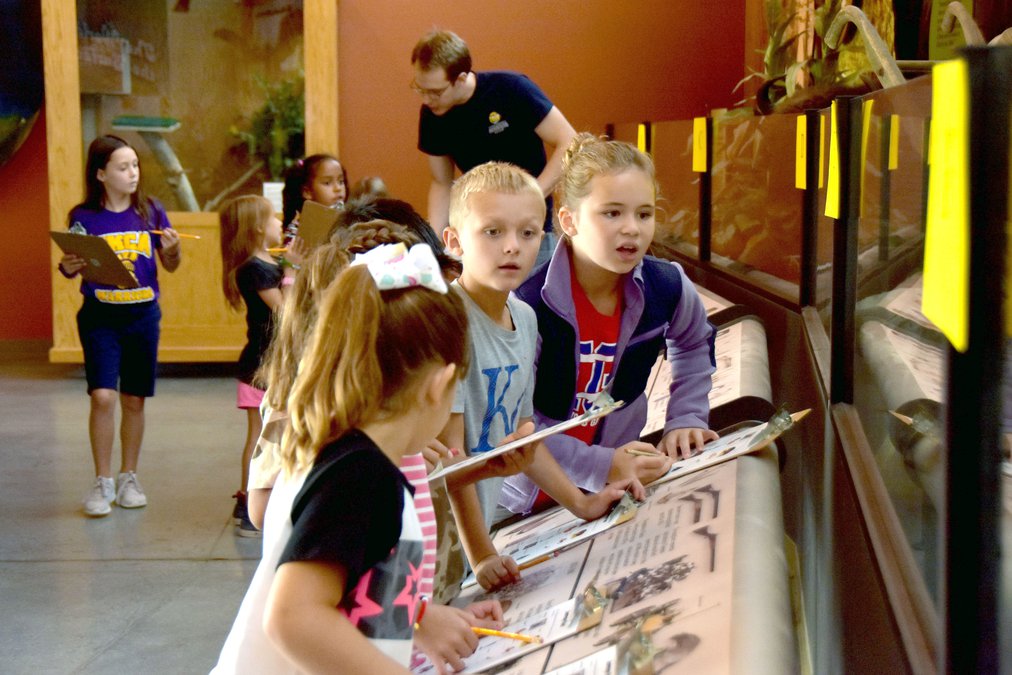Second graders from all over Barton County experienced one of the joys of grade school Wednesday when they loaded onto buses and traveled to the Kansas Wetlands Education Center for a field trip. Staff and volunteers there welcomed the students for the 10th annual wetlands day.
Curtis Wolf, director at the center, said by the end of the day, 351 students would be introduced to the diverse aspects of life in the wetlands.
“We love getting the kids out here and it’s just an awesome chance to get them exposed to the Cheyenne Bottoms,” Wolf said.
In the morning, students from Ellinwood and Hoisington elementary schools, Great Bend’s Jefferson and Riley elementary schools, and Holy Family and Central Kansas Christian Academy second graders were expected. School groups would cycle through seven stations both inside the building and in the field, before breaking for lunch and returning to their schools. The afternoon sessions began with lunch, and second graders from Central Plains, St. Joseph School in Ellinwood, and Great Bend’s Park, Lincoln and Eisenhower elementary schools would enjoy the afternoon at KWEC.
Students visited the KWEC Soil trailer, made bracelets to remind them of the many ways water cycles through the Cheyenne Bottoms, experienced what nighttime in the wetlands can sound like and how animals like Thurston, the owl on loan from the Great Bend Zoo, are adapted to survive at night.
They went on a scavenger hunt in the indoor display area, dressed up as animals in the Cheyenne Bottoms food chain, found out what dangers and risks migrating birds experience in an outdoor obstacle course, and collected samples of objects in nature from the nature trail.


Pam Martin, KWEC Educator, greeted students dressed in costume as a collection of algae, a common plant in the Bottoms and a food source for many of the animals that live there. During her presentation, students volunteered to dress up as various organisms in the food chain, including a clump of cattails, blood worms, crawdads, ducks, blue herons, beavers and minks. She explained how each was classified by what it eats. Children learned that the mink, despite its small size, is considered not only a carnivore, but a top predator in the Bottoms.
Meanwhile, out at the obstacle course, the race was on to see not only how fast the “birds” could navigate the course, but how many would survive. A volunteer explained.
“Birds have a tendency to run into something along their migration routes, here are the hazards: windows, buildings, towers, power lines, toxic waste and predators,” he said. It was an eye opener to learn how many will perish along the way to their seasonal homes.
The Kansas Wetlands Education Center is dedicated to educating the public about wetland communities, their importance, and the need for conservation and restoration, with emphasis on Cheyenne Bottoms and Quivira National Wildlife Refuge.





